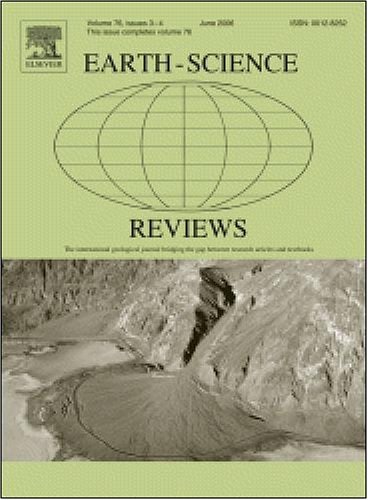Magmatic complexes of the Tekturmas Fold-and-Thrust Belt, Central Kazakhstan: An overview and new implications for the early Paleozoic evolution of the Paleo-Asian Ocean
IF 10.8
1区 地球科学
Q1 GEOSCIENCES, MULTIDISCIPLINARY
引用次数: 0
Abstract
The Tekturmas Fold-and-Thrust Belt (TFTB) is an important structure of the Kazakhstan Orocline in the western Central Asian Orogenic Belt (CAOB), which formation is linked with the early-middle Paleozoic evolution of the Paleo-Asian Ocean (PAO). The TFTB includes accreted oceanic sediments and magmatic rocks, supra-subduction ophiolites and fore-arc and back-arc siliciclastic rocks of Cambrian to Silurian ages. There remains a deficiency in data from magmatic rocks of the TFTB and, as a result, the timing of magmatism, mantle sources and tectonic settings are still debatable and the general early Paleozoic evolution of the TFTB is not fully understood. In this paper we review previous geological and age data (U-Pb, microfauna) and present new geological, geochronological (U-Pb zircon ages) and geochemical data and first isotope data (Sm-Nd, Pb-Pb, Lu-Hf). We discuss these new results and the previously reported, but still limited data from both magmatic and clastic rocks. Granite and rhyolite yielded middle-late Ordovician U-Pb zircon ages, 462 and 449 Ma, respectively. There are three main groups of volcanic/subvolcanic and plutonic rocks: (1) high-Ti, (2) mid-Ti, and (3) low-Ti. The high-Ti basalts and andesites are enriched in high-field strength elements (HFSE) and light rare-earth elements (LREE); they were derived at 2–4 % melting of an enriched garnet-bearing peridotite (εNdt = +2.1… +6.8; 206Pb/204Pb = 19.2–22.8) and erupted on an oceanic island or seamount. The mid-Ti gabbro is N-MORB formed from a 15 % melted depleted mantle source (εNdt = +8.1; 206Pb/204Pb = 18.9). The low-Ti group is depleted in HFSE, but not LREE, and formed at high degrees of melting (15–30 %) of depleted and ultra-depleted mantle sources (εNdt = +6.1… +10.8; εHft = +17.6… +19.3) suggesting their emplacement in a supra-subduction setting. Based on all the available data, we present a model of double-sided subduction in this part of the PAO, which generated four intra-oceanic arcs at its opposite sides: early-middle Cambrian and Early Ordovician on one side and Early and Late Ordovician on another side. The early-middle Cambrian and Early Ordovician arcs were tectonically eroded and their fragments have been preserved in blocks of mélange and greywacke sandstones only. The pieces of all arcs were tectonically juxtaposed in the TFTB during the processes of subduction and accretion in the PAO. The early Paleozoic magmatism ceased in early Silurian time.
求助全文
约1分钟内获得全文
求助全文
来源期刊

Earth-Science Reviews
地学-地球科学综合
CiteScore
21.70
自引率
5.80%
发文量
294
审稿时长
15.1 weeks
期刊介绍:
Covering a much wider field than the usual specialist journals, Earth Science Reviews publishes review articles dealing with all aspects of Earth Sciences, and is an important vehicle for allowing readers to see their particular interest related to the Earth Sciences as a whole.
 求助内容:
求助内容: 应助结果提醒方式:
应助结果提醒方式:


